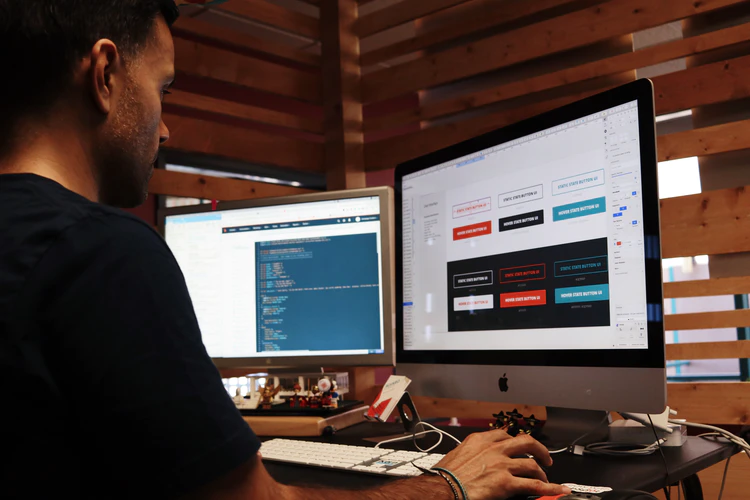A few decades back, when you considered building a website, you would have put that plan on the sidelines due to limitations in the technical know-how and the available technology during that time. Nowadays, thanks to great leaps in information technology, it is possible for you to build and design your website even if you have little to no background in web design, web development, and coding languages. With the proper resources and tools, you can easily create a personal website or business website. Here, we’ll provide easy step-by-step instructions on how to build a functional website.

Register Your Domain and Sign Up for Web Hosting
While some instructions and guides separate these steps, we choose to have them combined in a single step due to their close connection. The domain name is the name and address of your website, which will be used by web users to find your website over the internet. When it comes to the question of how much does a website cost, domain and web hosting costs make a significant part of the total cost. For the domain name, the cost can be between $10 and $50 a year, but you can typically get a domain for around $15.
Web hosting is considered as the physical location or the “house” of your website. Once you have the domain name or “address” it’s time to give your website a place to live. With web hosting, your website files are hosted and stored in a secure server where anyone can connect to that server through the internet to read and browse your website. Your web hosting cost can be between $3 and $15 per month, depending on your chosen web hosting service provider.
Install WordPress
Going back to web hosting, you’ll need to edit and maintain the files or content of your website through a content management system (CMS). WordPress is the most popular and user-friendly CMS available. Installing WordPress usually has a “one-click” option through your chosen web host’s website, but in cases where that option is not available, you can manually set up WordPress through its website’s support page.
Work on Your Website Theme and Design
Once you have WordPress installed, you will have access to its numerous free and paid website themes. For first-time website builders, the free theme option is a good start. There are various popular and high-quality website themes to choose from, based on your purpose for building a website (personal or business). You can also work on the color scheme of your website theme, add a logo, a sidebar, or a widget to make your website more attractive.
Configure Your Website
If you have found a great look for your website, it’s time to focus on its functionality and accessibility. One important feature you need to consider is the navigation menu. This is useful when your website contains multiple content and links to other pages, especially if you’re building a business website. Your homepage should have a navigation menu set up so that the visitors of your website can go from one page to another on your website. Also, your website will generate individual links to other pages of your website, which you can make use of when you’ll be working on establishing your online presence through SEO and digital marketing strategies.
Create Your Content
Your website is up and running, and to put the finishing touches, you need to create and add your content to your website. Since your website is already pretty well-structured, what you can do is add essential information and details for each page or part of your website. Your Homepage is the first thing that your site visitors can see, so make sure to have interesting and engaging content. Your About page should tell what your website’s purpose is or simply what it’s about. Your Blog page can be your creative playground, where you can post relevant blogs that your site visitors might be interested in. Your Contact page should have the necessary contact information where your site visitors can reach you. If your website is for business purposes, you can add Services or Shop pages to showcase the services or products you want to promote.

Having a technology made for making a website more convenient is something we should appreciate. Almost gone are the days when we have to rely on web developers and web page designers to create websites for us. Now, we can realize the designs we envisioned for our website by choosing the right tools and resources. With this, we can make websites exactly how we want them to be.
